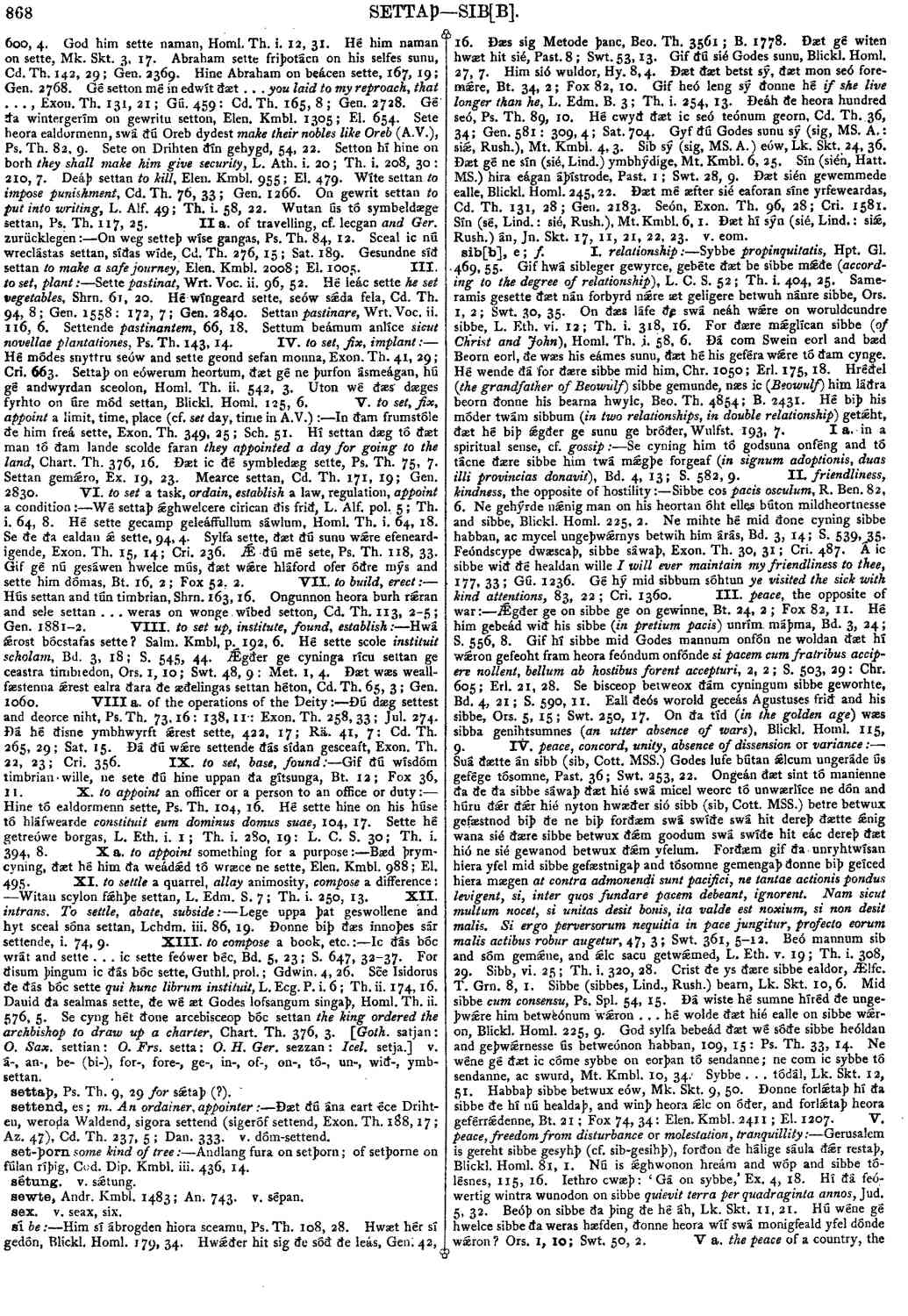sí
- verb [ anomalous ]
-
Him sí ábrogden hiora sceamu,
- Ps. Th. 108, 28.
- Hwæt hér sí gedón. Blickl. Homl. 179, 34.
- Hwǽðer hit sig ðe sóð ðe leás. Gen; 42, 16.
- Ðæs sig Metode þanc. Beo. Th. 3561; B. 1778.
-
Ðæt gé witen hwæt hit sié,
- Past. 8; Swt. 53, 13.
-
Gif ðú sié Godes sunu,
- Blickl. Homl. 27, 7.
-
Him sió wuldor,
- Hy. 8, 4.
-
Ðæt ðæt betst sý, ðæt mon seó foremǽre. Bt. 34,
- 2; Fox 82, 10.
-
Gif heó leng sý ðonne hé
if she live longer than he,
- L. Edm. B. 3; Th. i. 254, 13.
- Ðeáh ðe heora hundred seó. Ps. Th. 89, 10.
-
Hé cwyð ðæt ic seó teónum georn,
- Cd. Th. 36, 34; Gen. 581: 309, 4; Sat. 704.
-
Gyf ðú Godes sunu sý (sig,
- MS. A.: siǽ, Rush.), Mt. Kmbl. 4, 3.
-
Sib sý (sig,
- MS. A.) eów, Lk. Skt. 24, 36.
-
Ðæt gé ne sín (sié,
- Lind.) ymbhýdige, Mt. Kmbl. 6, 25.
-
Sín (sién,
- Hatt. MS.) hira eágan áþístrode. Past. 1; Swt. 28, 9.
- Ðæt sién gewemmede ealle. Blickl. Homl. 245, 22.
-
Ðæt mé æfter sié eaforan síne yrfeweardas,
- Cd. Th. 131, 28; Gen. 2183.
-
Seón,
- Exon. Th. 96, 28; Cri. 1581.
-
Sín (sé. Lind. : sié. Rush.),
- Mt. Kmbl. 6, 1.
-
Ðæt hí sýn (sié,
- Lind.: siǽ. Rush.) án, Jn. Skt. 17, 11. 21, 22, 23.
Bosworth, Joseph. “sí.” In An Anglo-Saxon Dictionary Online, edited by Thomas Northcote Toller, Christ Sean, and Ondřej Tichy. Prague: Faculty of Arts, Charles University, 2014. https://bosworthtoller.com/27570.
Checked: 0